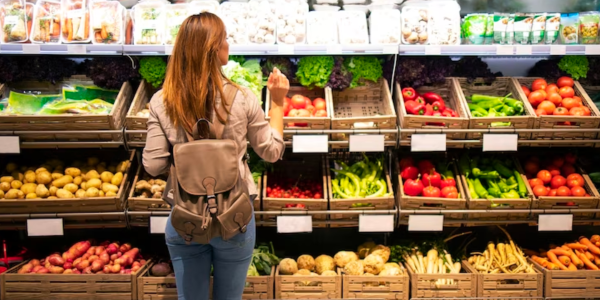Are supermarkets charging you more than needed? Reserve Bank of Australia report suggests it’s likely
By
VanessaC
- Replies 14
It’s apparent that supermarket prices are continuously rising.
However, according to the Reserve Bank of Australia (RBA), supermarkets are able to pull off cashing in on their customers because, quite frankly, customers have no other options.
Research done by economists Callan Windsor and Max Zang studied earnings calls—dating back to 2007—wherein market analysts and journalists ask big corporations about their latest results.
The transcripts of these earnings calls said supermarkets were more likely to be able to bring up prices during a supply shock or crisis period but still get away with it since consumers depended on their products.
The research also highlighted how supermarkets, along with meat, fruit and vegetable suppliers, are less likely to see a decrease in demand for their products despite price increases due to bad weather, supply chain disruption, or a pandemic.
It’s worth noting that supermarket giants Coles and Woolworths were not explicitly mentioned in the research or accused of any wrongdoing. However, both supermarkets have a 65 per cent market share, with an estimated 27.9 for Coles and 37.1 for Woolworths based on data from Statista, and have seen their profits rise during the cost of living crisis. ALDI has 9.5 per cent of the market, ahead of IGA's 6.9 per cent.
The Woolworths Group, which includes discount store BIG W, last month announced a $1.6 billion profit in the year to June, up by 4.6 per cent. Their revenue rose 5.7 per cent, now at $64.29 billion.
A day earlier, Coles announced its net profit after tax for the year to June 25 surged by 4.8 per cent to $1.1 billion in the year to June. Their revenue is now up by 5.9 per cent at $40.5 billion.
Overall, the July inflation rate was 4.9 per cent down from 5.4 per cent in June and the lowest annual level since February 2022.
But despite this, consumers continue to feel the pinch in their pockets with bread, cereal, dairy, education, rent, health, and other costs continuously rising, based on data from the Australian Bureau of Statistics.
You can see a summary of the different costs below:
 Supermarket inflation also increased by 6.7 per cent, which was well above the 1.7 per cent level Coles reported for the 2021-22 financial year and Australia’s broader consumer price index.
Supermarket inflation also increased by 6.7 per cent, which was well above the 1.7 per cent level Coles reported for the 2021-22 financial year and Australia’s broader consumer price index.
Despite the ease in supply chain pressures, the RBA research predicted that higher input costs (especially for imported components) may keep consumer prices high.
'Firms’ price-setting sentiment also appears more sensitive to rising input costs compared to falling costs, suggesting that prices could remain front-of-mind for company executives even as supply pressures ease,' the researchers said.
An increase in wages while unemployment is at low levels was also unlikely to cause price hikes.
'Discussions around final prices have become more sensitive to import costs but less sensitive to labour costs in the period since 2021,' the researchers added.
Furthermore, the Reserve Bank of Australia is expecting inflation to remain on top of its 2 to 3 per cent target until June 2025.
 What are your thoughts on this matter, dear members? Do you have tips that could help other shoppers stretch their dollars further? Let us know in the comments below!
What are your thoughts on this matter, dear members? Do you have tips that could help other shoppers stretch their dollars further? Let us know in the comments below!
However, according to the Reserve Bank of Australia (RBA), supermarkets are able to pull off cashing in on their customers because, quite frankly, customers have no other options.
Research done by economists Callan Windsor and Max Zang studied earnings calls—dating back to 2007—wherein market analysts and journalists ask big corporations about their latest results.
The transcripts of these earnings calls said supermarkets were more likely to be able to bring up prices during a supply shock or crisis period but still get away with it since consumers depended on their products.
The research also highlighted how supermarkets, along with meat, fruit and vegetable suppliers, are less likely to see a decrease in demand for their products despite price increases due to bad weather, supply chain disruption, or a pandemic.
It’s worth noting that supermarket giants Coles and Woolworths were not explicitly mentioned in the research or accused of any wrongdoing. However, both supermarkets have a 65 per cent market share, with an estimated 27.9 for Coles and 37.1 for Woolworths based on data from Statista, and have seen their profits rise during the cost of living crisis. ALDI has 9.5 per cent of the market, ahead of IGA's 6.9 per cent.
The Woolworths Group, which includes discount store BIG W, last month announced a $1.6 billion profit in the year to June, up by 4.6 per cent. Their revenue rose 5.7 per cent, now at $64.29 billion.
A day earlier, Coles announced its net profit after tax for the year to June 25 surged by 4.8 per cent to $1.1 billion in the year to June. Their revenue is now up by 5.9 per cent at $40.5 billion.
Overall, the July inflation rate was 4.9 per cent down from 5.4 per cent in June and the lowest annual level since February 2022.
But despite this, consumers continue to feel the pinch in their pockets with bread, cereal, dairy, education, rent, health, and other costs continuously rising, based on data from the Australian Bureau of Statistics.
You can see a summary of the different costs below:
Despite the ease in supply chain pressures, the RBA research predicted that higher input costs (especially for imported components) may keep consumer prices high.
'Firms’ price-setting sentiment also appears more sensitive to rising input costs compared to falling costs, suggesting that prices could remain front-of-mind for company executives even as supply pressures ease,' the researchers said.
An increase in wages while unemployment is at low levels was also unlikely to cause price hikes.
'Discussions around final prices have become more sensitive to import costs but less sensitive to labour costs in the period since 2021,' the researchers added.
Furthermore, the Reserve Bank of Australia is expecting inflation to remain on top of its 2 to 3 per cent target until June 2025.
Key Takeaways
- A research paper by the Reserve Bank of Australia (RBA) has revealed that supermarkets are able to increase prices during a supply shock and face no significant decline in demand, as customers depend on their products.
- The paper analysed transcripts of earnings calls dating back to 2007, demonstrating that supermarkets, as well as meat, fruit and vegetable suppliers, maintain a consistent demand, regardless of price hikes due to circumstances like bad weather or disruptions such as COVID-19.
- Although not named in the research, Coles and Woolworths are highlighted due to their combined 65 per cent market share, and reported profit increases during the cost of living crisis.
- Despite an easing in supply chain pressures, the RBA paper predicts that higher input costs, particularly for imported components, could keep consumer prices high.








